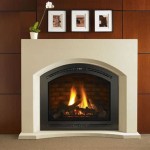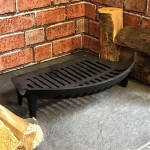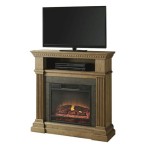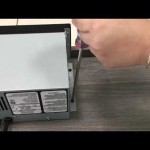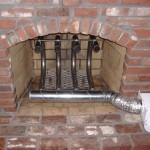Electric Fireplace Heater With Remote: A Comprehensive Overview
Electric fireplace heaters with remotes have become increasingly popular heating solutions for homes, offering a blend of aesthetics, convenience, and energy efficiency. They provide the ambiance of a traditional fireplace without the associated mess, safety concerns, or complex installation requirements. These units are designed to simulate the appearance of a real fire, often using LED technology to create realistic flame effects. The integrated heater provides supplemental warmth to a room, and the remote control offers convenient operation from a distance.
The appeal of these devices lies in their simplicity and versatility. They can be easily installed in almost any room, requiring only a standard electrical outlet. The remote control adds a layer of convenience, allowing users to adjust the heat output, flame intensity, and timer settings without having to get up. This makes them particularly useful for individuals with mobility issues or those who simply prefer the ease of remote operation.
This article delves into the features, benefits, and considerations associated with electric fireplace heaters with remotes, providing a comprehensive understanding of these heating appliances. It will cover various aspects, including their operational principles, energy efficiency, safety features, and the different types available on the market. Ultimately, the aim is to provide readers with the necessary information to make an informed decision when considering the purchase of an electric fireplace heater with a remote.
Understanding the Mechanics and Features
An electric fireplace heater with a remote fundamentally functions as a combination of a visual display and a heating element. The visual display, typically consisting of LED lights and sometimes reflective surfaces, creates the illusion of a flickering flame and burning embers. The heating element, usually a fan-forced coil or an infrared heater, generates heat that is then circulated into the room.
The remote control acts as the central hub for controlling the various functions of the fireplace. Most remotes allow users to adjust the heat output, often with multiple settings ranging from low to high. The remotes also frequently control the flame effects, enabling adjustment of the flame intensity, color, or even the type of flame displayed (e.g., a roaring fire versus a gentle flicker). Some models even feature a timer function, allowing users to set the fireplace to automatically turn on or off after a specified period.
The heating element within these devices is typically either a fan-forced coil heater or an infrared heater. Fan-forced coil heaters work by passing air over a heated coil, which then distributes the warm air into the room using a fan. These are generally more effective at quickly heating a larger area. Infrared heaters, on the other hand, radiate heat directly to objects and people in the room, providing a more targeted and efficient warming experience. Infrared heaters do not rely on air circulation, which can be beneficial for individuals with allergies or sensitivities to dust.
Beyond the core heating and flame functions, many electric fireplaces offer additional features. Some have built-in thermostats that allow them to maintain a consistent room temperature. Others have adjustable brightness settings for the flame effects, ensuring that the visual display is not too overwhelming, especially in darker rooms. Select models also include sound effects, such as crackling logs, to further enhance the realistic fireplace experience. These added features contribute to the overall user experience and can influence the decision-making process when choosing an electric fireplace heater.
Modern electric fireplaces often incorporate energy-saving technologies. LED lighting, used for the flame effects, consumes significantly less electricity than traditional incandescent bulbs. Some models also have an eco-mode that automatically adjusts the heat output based on the room temperature, minimizing energy consumption while maintaining a comfortable environment. The efficiency of the heating element itself also plays a crucial role in the overall energy performance of the fireplace.
Assessing Energy Efficiency and Cost Considerations
Energy efficiency is a significant factor to consider when evaluating electric fireplace heaters with remotes. The energy consumption of these devices depends on several factors, including the size of the heating element, the duration of use, and the specific features enabled. It is important to understand how these factors contribute to the overall cost of operating the fireplace.
The wattage of the heating element is a primary indicator of energy consumption. A higher wattage translates to a greater heat output but also a higher energy consumption. Most electric fireplace heaters range from 1000 to 1500 watts. Running a 1500-watt heater for one hour will consume 1.5 kilowatt-hours (kWh) of electricity. To calculate the cost of operation, multiply the kWh consumed by the local electricity rate. This will provide an estimate of the hourly operating cost.
The use of LED lighting for the flame effects has a minimal impact on energy consumption. LEDs are highly energy-efficient, consuming only a fraction of the power compared to traditional lighting methods. The flame effects can be enjoyed without significantly increasing the electricity bill. However, running the heater for extended periods, particularly at high settings, can substantially increase energy usage.
Thermostat settings play a crucial role in optimizing energy efficiency. By setting the thermostat to a desired room temperature, the heater will automatically turn on and off to maintain that temperature. This prevents the heater from running continuously, which can significantly reduce energy consumption. Furthermore, using the timer function to automatically turn off the fireplace after a set period can prevent it from running unnecessarily, further conserving energy.
Comparing the energy efficiency of different models is essential when making a purchase decision. Look for models with energy-saving features such as eco-mode, adjustable thermostat settings, and efficient heating elements. Reading user reviews and comparing energy consumption data can provide valuable insights into the real-world performance of different electric fireplace heaters. While the initial purchase price is important, considering the long-term operating costs is crucial for making an informed and cost-effective decision.
Beyond the direct energy costs, consider the potential impact on the overall heating system of the home. An electric fireplace heater can be used to supplement the central heating system, allowing users to lower the thermostat for the entire house and focus on heating a specific room. This can lead to significant energy savings, especially in larger homes where heating the entire space may not always be necessary. However, it is important to assess whether the electric fireplace heater is a cost-effective alternative to the existing heating system based on individual usage patterns and heating needs.
Evaluating Safety Features and Installation Considerations
Safety is paramount when selecting an electric fireplace heater with a remote. These devices generate heat and electricity, so it is crucial to choose models with robust safety features to prevent accidents and ensure safe operation. Proper installation is also essential to minimize potential hazards.
Overheat protection is a critical safety feature that should be present in all electric fireplace heaters. This feature automatically shuts off the heater if it detects that it is overheating, preventing potential fires or damage to the unit. The overheat protection mechanism typically involves a thermal cutoff switch that interrupts the electrical circuit when the temperature exceeds a safe threshold. It is vital to ensure that the chosen model has a reliable overheat protection system.
Another important safety feature is a cool-to-the-touch exterior. This design ensures that the outer surfaces of the fireplace remain cool, even when the heater is running at its highest setting. This prevents accidental burns, especially for households with children or pets. The exterior should be made of materials that do not conduct heat effectively, such as certain types of plastic or specially coated metals. Checking for a cool-to-the-touch exterior is a simple but effective way to enhance safety.
Ground fault circuit interrupter (GFCI) protection is also advisable, particularly in areas with potential moisture exposure, such as bathrooms or kitchens. A GFCI outlet detects imbalances in the electrical current and quickly shuts off the power, preventing electric shocks. While not all electric fireplaces come with built-in GFCI protection, it is recommended to plug them into a GFCI-protected outlet, especially in damp environments.
Proper installation is crucial for safe operation. Electric fireplace heaters should be placed on a level surface and away from flammable materials such as curtains, furniture, or paper. Ensure that there is adequate space around the fireplace for proper ventilation. Do not block the air vents, as this can cause the unit to overheat. Avoid using extension cords, as they can be a fire hazard. Plug the fireplace directly into a wall outlet with the appropriate voltage and amperage rating.
Regular maintenance is also essential for ensuring safety. Periodically inspect the fireplace for any signs of damage, such as frayed wires, cracked panels, or loose connections. Clean the unit regularly to remove dust and debris that can accumulate and potentially cause a fire hazard. Unplug the fireplace before cleaning and use a soft, dry cloth to wipe down the exterior. Do not use water or cleaning solvents, as these can damage the electrical components.
Compliance with safety standards and certifications is another important consideration. Look for models that are certified by recognized testing laboratories, such as UL (Underwriters Laboratories) or ETL (Electrical Testing Laboratories). These certifications indicate that the fireplace has been tested and meets established safety standards. Reviewing the product's safety documentation and warranty information can provide additional assurance of its safety and reliability.

60 Inch Electric Fireplace 750 1500w Recessed Wall Mounted Remote Oneinmil

Nsdirect 60 Wall Mounted Recessed Electric Fireplace Heater With Remote And Led Touch Screen Multi Color Flame Com

Electric Fireplace Inserts Recessed Heaters Bestoutdor

Homcom 26 Electric Fireplace Stove 1400w Freestanding Heater With Adjustable Temperature Overheat Protection Remote Control Timer 7 Brightness Settings White Aosom

Country Living Infrared Freestanding Electric Fireplace Stove Indoor Room Heater With Remote Multiple Flame Colors In Navy Blue Target

Country Living Infrared Freestanding Electric Fireplace Stove Indoor Room Heater With Remote Multiple Flame Colors In Deep Red Com

Recessed Electric Fireplaces Embedded Fireplace Heaters Bestoutdor

Homcom 31 Electric Fireplace With Dimmable Flame Effect And Mantel Freestanding Space Heater Log Hearth Remote Control 1400w White Aosom Com

Flame Shade Electric Fireplace Stove For Indoor Use 63cm Portable Freestanding Space Heater With Remote Dimension 65 3x36 1x63 3cm 1384 Tv Home Appliances Air Conditioners Heating On Carou

Electric Black Fireplace Stove Heater Infrared Space W Flame Effect And Remote

